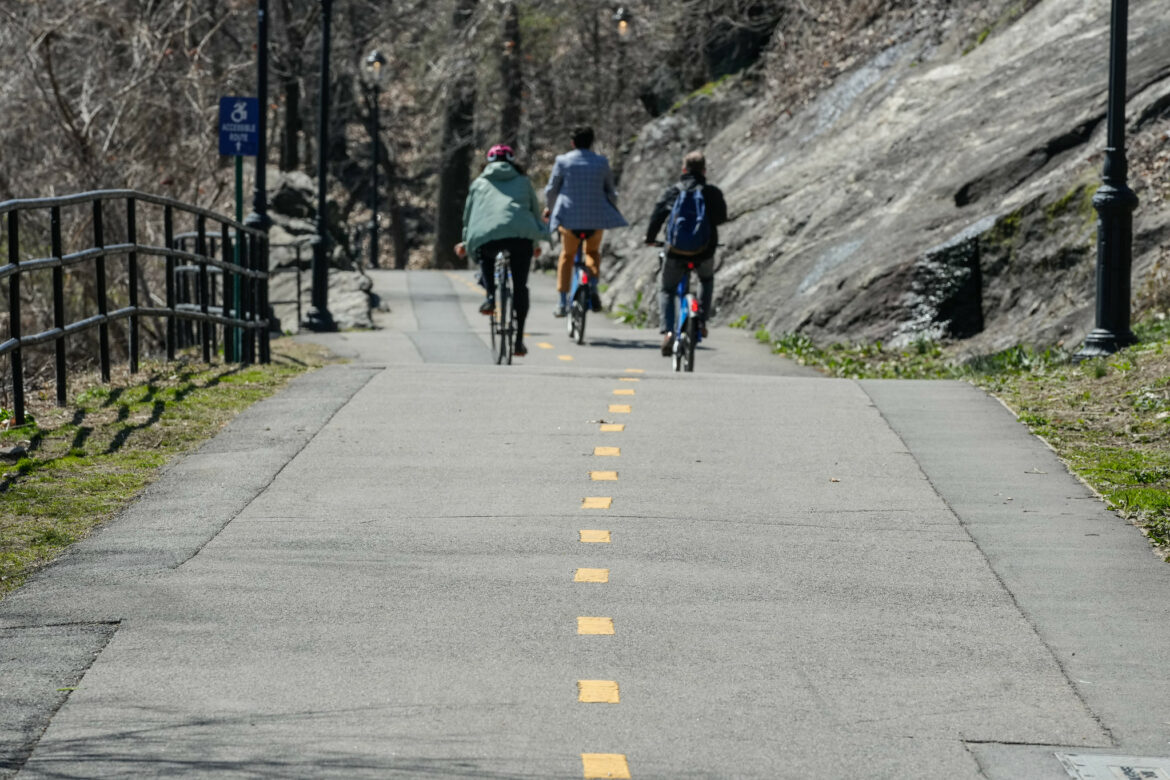
Opinion: In the ‘Year of Greenways,’ Let’s Insist on Equity
“This absence of unified design and management can compound inequality. Where some areas of the city have seen the lion’s share of the city’s attention, other areas have been and are in danger of continuing to be completely left behind.”
Michael Appleton/Mayoral Photography Office
The Harlem River Greenway connecting Manhattan and The Bronx.
CityViews are readers’ opinions, not those of City Limits. Add your voice today!
This year promises to be big for New York City’s greenways. Just this past October, Mayor Eric Adams announced plans for 60 miles of new or significantly upgraded greenways in Brooklyn, the Bronx, Queens, and Staten Island. And in 2024, the city will be creating a citywide plan for greenways for the first time in over 30 years.
As the NYC Greenways Coalition, we’re thrilled about this momentum, and believe that all New Yorkers should be excited that so much is underway. We also believe that this is the moment to insist, above all, that equity is prioritized as part of progress.
Just this week, the Urban Land Institute (ULI) released a report proposing recommendations from its Technical Assistance Panel (TAP) that dug into plans for dedicated bike and walkways amid parks, city streets, and coastal stretches, all through an equity lens. The report also trained its attention on us: it put forth that “equitable greenway development must be guided by a unified vision of an equitable greenway network,” and that we, the NYC Greenways Coalition, could be the vehicle for devising, advocating for, and advancing such a vision.
We wholeheartedly agree, and we commend the ULI and the TAP on their thoughtful, wide-ranging suggestions for effective next steps in equitable greenway development. We are particularly enthusiastic about the mandate that, as a first move in this direction, we define—for our own purposes, for collaboration with other entities in New York City, and for the broader community of residents and visitors—what the term “greenway” means. By defining greenways, we hope to make their unique characteristics clear enough to make them both identifiable in their own right, and distinguishable from other public roads and pathways.
At their best, greenways are the arterial networks that connect cycling, running, walking, and skating paths with green, landscaped beds, maintaining complete separation from automobile traffic. Greenways tend to be measured in miles rather than in city blocks, and as such, can connect neighborhoods throughout our city that are not as easily traversed via other forms of public transportation. Such interconnectivity is critical: all New Yorkers deserve safe and pleasant equitable access to both neighborhoods and greenways.
Composed of 45 member groups from each of New York’s boroughs, our coalition is uniquely qualified to ensure that, in the course of planning and implementation, greenways are built to fit this bill. It is our hope, and our imperative, that plans for greenway infrastructure development in the coming years think of our city not as five individual landscapes, but as one, comprehensive community. This addresses the second mandate of the ULI report, that the coalition work to fill in the gaps that have resulted, and will otherwise continue to result, from the fragmented nature of greenway oversight: as of now, greenways are designed and managed by a variety of disparate city agencies.
This absence of unified design and management can compound inequality. Where some areas of the city have seen the lion’s share of the city’s attention, other areas have been and are in danger of continuing to be completely left behind. For example, the city recently spent $217 million on an eight-block section of the East River Greenway near Midtown. In contrast, Staten Island has received minimal investments.
Undoubtedly, the Bronx, Queens, and Staten Island—home to a collective 4.2 million people—deserve more. Much more.
As EdMundo Martinez, a seasoned micromobility and transportation activist from the Bronx who co-chairs our Communications, Outreach & Equity Working Group says: “We need a safe and connected network. And I don’t just mean connecting main thoroughfares: I mean connecting schools to parks, parks to the community, connecting the greenway networks to the supermarkets, to the library, to other modes of transportation.”
When implemented successfully, Greenways provide numerous measurable benefits. They allow for safe alternatives to automobile transportation, exercise while commuting to work or errands, and facilitate connections to community and nature. Such benefits have compound positive environmental, social, and financial effects. A move away from cars reduces both greenhouse gas emissions and congestion. Protected avenues for walking, biking, scootering, and other forms of micro-mobility allow New Yorkers to explore their neighborhoods and other parts of the city safely.
And better connections to employment hubs across the city (be it Hunts Point, St. George, Long Island City, Brooklyn Navy Yard, or midtown Manhattan) fuels economic development. According to a study of shared-use paths in North Carolina, every dollar invested in trail construction generates $1.72 in revenue, and they also provide health and transportation benefits. New York City stands to gain from any investments in greenways.
In the coming months, groups all over the city—including ours—and the members that comprise them, will be putting their heads together to think (or re-think) about how greenways can best serve New Yorkers. Whether you are already a frequent greenway user, a sometimes greenway user, or have never heard of greenways before, we invite you to join us in the process. We want the Year of Greenways to be a year of equitable greenways, for now, and for our future.
As a coalition, we are here to listen. Connecting with us via greenways.nyc is the best way to get involved.
Hunter Armstrong, EdMundo Martinez and Sharon Pope-Marshall are members of the NYC Greenways Coalition.
The post Opinion: In the ‘Year of Greenways,’ Let’s Insist on Equity appeared first on City Limits.


